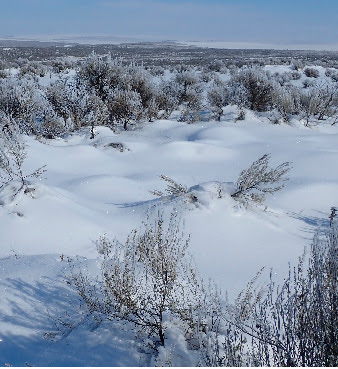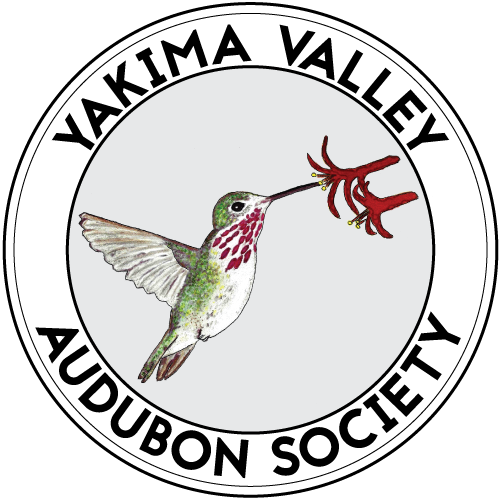Washington Sage Grouse - 2019 Status
General ·Populations of Greater sage-grouse in Washington continue to decline and these have resulted in serious concerns for the species long-term conservation status, according to the 2019 annual report issued by the Washington State Department of Wildlife (WDFW). That report forms the basis of this report. The overall state population was estimated to be 676 in 2019, associated with 21 leks (breeding site locations). The grouse were distributed between three populations. Most of the remaining grouse are in the so-called “Moses Coulee” population, on and near the Waterville Plateau (northeast of Wenatchee). This group had an estimated 585 birds, associated with 17 leks. Only 78 birds on three leks survive on the Yakima Training Center (YTC). A tiny number with only 13 birds with one lek remains in the Crab Creek group. A fourth population, the Yakama Nation, appeared to disappear between 2018 and 2019. The overall population increased 32% between 2017 and 2018 but decreased 5% between 2018 and 2019. Governmental agencies and non-governmental organizations are attempting to restore populations of sage-grouse with the aid of land acquisition, habitat improvement, conservation programs, and translocations. Between 2004 and 2016 the WDFW, YTC, Yakama Nation, and others collaborated to translocate sage-grouse from other states (Nevada, Oregon, Idaho, and Wyoming) to three of the four populations in Washington. Six males and 93 females were translocated to YTC to genetically augment an endemic population, 145 males and 135 females were translocated to the Crab Creek area of Lincoln County to re-establish an extirpated population, and 85 males and 43 females were translocated to the Yakama Nation, also to re-establish an extirpated population. The translocation effort that appears to have had the greatest success so far in establishing an active lek and a documented breeding/nesting population is Crab Creek, although its long-term persistence may be reliant on periodic augmentation efforts.

Moses Coulee
Because the majority of the Moses Coulee population occupies private land, most management efforts have focused on private land programs designed to encourage practices that benefit grouse. Chief among these are two federal conservation programs (both USDA) such as the Conservation Reserve Program (CRP) and State Acres for Wildlife Enhancement (SAFE) which enhance habitat for sage grouse. Lek surveys in 2019 showed that 17 of 32 historical leks were active with an estimated population of 585. The overall population increased 41% between 2017 and 2018 and1% between 2018 and 2019. The increases are notable reversals following consistent declines between 2010 and 2017. But it is important to recognize the 2019 population is still less than half the population observed in 2010. This current population trend is also different than observed in the other three Washington populations (all down) and the adjacent state of Oregon (down 25% between 2018 and 2019). A plausible explanation for this long-term decline was the dramatic alteration in the abundance of CRP. In 2010 a large number of CRP contracts ended resulting in a conversion of CRP to wheat, CRP to SAFE, and wheat to CRP. Even though at the end roughly the same acreage was enrolled in conservation programs, there is a lag effect associated with the time it takes for a field of newly planted vegetation to reach maturity. On a positive note, many of these planted fields now outwardly appear to be suitable for sage-grouse, so there is hope for an upward tick in numbers in the coming years.
Yakima Training Center
The population of greater sage-grouse on the YTC occupies shrub-steppe habitats on public land. Lek surveys in 2018 showed that 6 of 20 historical leks were active with an estimated population of 112. This was a moderate increase from the estimate of 101 birds in 2017. The population subsequently declined 36% to 78 in 2019, the lowest population estimate ever recorded for the installation in more than 50 years of surveys. Only three of 20 historical leks (11%) were active in 2019, a dramatic decline since 2018. The long-term decline of the YTC population is likely due to habitat loss, degradation, and fragmentation as a result of the military’s land-use and associated wildland fires. Other possible factors such as inbreeding depression, predation, and disease may contribute to local declines. It is clear that the population on the YTC is at immediate risk of extirpation. Within YTC, the U.S. Army has designated areas of protection for the species. These Sage-grouse Protection Areas contain restrictions on military training and other land-uses. These encompass 31,809 ha, or approximately 25% of the installation. Given wildland fire often results from its land-use, YTC implements an aggressive fire prevention and suppression program which was significantly modified in 2011 to reduce the frequency of wildfire occurrence and potential for fires escaping designated fire containment areas. Despite these efforts, YTC continues to be impacted by fires resulting from its military land-use, lightning strikes, and human-caused fires originating on adjacent private lands and interstate highways. A revision of the installation’s Integrated Wildland Fire Management Plan is underway and is expected to be completed by autumn 2020.
In order to restore areas impacted by military maneuvers and wildfires, the Army seeds bunchgrasses and forbs and plants tens of thousands of bare root seedlings of Wyoming big sagebrush on hundreds of hectares each year. Between 2011 and 2017 YTC completed sagebrush seeding/planting efforts on approximately 14,000 ha of previously burned areas. Military range observation towers no longer required have been removed in key sage grouse areas to reduce the number of perches and nesting platforms for raptors and common ravens and raven nests have also been removed on other structures. Fences within 2 km of leks and those in high use areas on YTC have been marked or removed.
Additionally, several land acquisitions/conservation easements occurring off the installation and additional perch/fence removal projects and implementation of perch deterrent on and/or adjacent to YTC were agreed upon as mitigation measures associated with the recent Vantage to Pomona 230KV Transmission Line Project and are currently in various stages of implementation. In addition to the management responses to military activities, the YTC also discontinued grazing by livestock in 1995.
Crab Creek
The historic presence of sage-grouse in the Crab Creek area has been well-established, as well as their extirpation. Six leks were documented in the Crab Creek area for the 1954-1986 period; they were last known to be active in 1955, 1974, 1978, 1978, 1984, and 1986. Translocations to reestablish this population were initiated in 2008 and continued through 2015; in 2011 a lek was established in a new location that continues to be active. The high male count at this lek in 2016-2019 was 23, 10, 7, and 5, respectively. The marked population decline since the last translocation in 2015, the small size, and the relative isolation suggest that continued augmentations are needed to ensure long-term persistence of the population.
Yakama Nation
The population of sage-grouse on the Yakama Nation was extirpated before the mid-1960s. A lek formed in 2013 on private land adjacent to the Yakama Nation following translocation efforts. A single male was observed on this lek in 2018, however, this male appeared to be absent in 2019.
